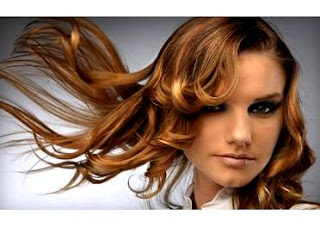The most visible and obvious hair change with age is in the hair color. Hair color is caused by a pigment (melanin) that is produced by the hair follicle. With aging, the follicle produces less melanin.
Graying often begins in the 30′s although this age can vary. Graying usually begins at the temples and extends to the top of the scalp. Hair becomes progressively lighter, eventually turning white. By the time they are in their 40′s, about 40% of all people have some gray scalp hair.
Body and facial hair also turn gray, but usually later than scalp hair. Graying is also genetically determined, for example a son can gray early if it runs in the family. Gray hair tends to occur earlier in Caucasians and later in Asian races. Although, a lot of money is spent on nutritional supplements, vitamins, and other products to stop or decrease the rate of graying, they do not help.
The other major hair change with aging is in the hair thickness. Hair is a protein strand that grows through an opening (follicle) in the skin. A single hair has a normal “life cycle” of about 4 or 5 years. That hair then falls out and is replaced with a new hair. The amount of hair on our body and head is determined by our genetic make up. However, almost everyone experiences some hair loss with aging. The rate of hair growth slows, the hair strands become smaller (and have less pigment) and so the thick coarse hair of a young adult eventually becomes thin, fine and light-colored.
Many of the hair follicles stop producing new hairs. Both men and women lose hair as they age. About 25% of men begin to show some signs of baldness by the time they are 30 years old, and about two-thirds are either bald or have a balding pattern by age 60. Men develop a typical pattern of baldness associated with the male hormone testosterone hair is lost first from the front and top of the scalp. Women also show a typical pattern of hair loss as they age the hair becomes less dense all over and the scalp may become visible.
Body and facial hair are also lost. Although the number of hairs is less, individual hair may become coarser. Women may notice a loss of body hair but may find that they have coarse facial hair, especially on the chin and around the lips. Men may find the hair of their eyebrows, ears, and nose becoming longer and coarser.
Deal with excessive body hair
Some women (some children too) have dark, coarse and excessive body hair. This condition is called hirsutism. It is also known as hypertrichosis or excessive hair on females.
The condition is characterized by enlarged hair follicles and increased pigmentation of hair. The hair typically occurs in a distribution pattern, which is normally seen in adult males. The causes vary from heredity, or endocrine system abnormalities (like acromegaly, precocious puberty, Cushing’s syndrome, congenital adrenal hyperplasia, and ovarian lesions), or certain medications such as minoxidil, androgenic steroids, or testosterone. There may be signs of masculinization, such as deepening of the voice, excessive facial hair growth, increased muscle mass, decreased breast size, increased size of genitals, and menstrual irregularities. Risk factors for hirsutism include family history of hirsutism, endocrine disorders, use of androgens (androgenic steroids or testosterone as amongst athletes), and old age.
How is the condition diagnosed?
The condition is diagnosed from the patient’s health and family history and by examining the patient. For diagnosing the cause of hirsutism, following special tests may be required:
blood test to determine levels of: luteinizing hormone, follicle-stimulation hormone (FSH), prolactin, and other hormones
abdominal CT scan
Ultrasonography
What is the treatment?
The treatment depends upon the cause of the hirsutism and medications to control it. If hirsutism is due to an underlying endocrine disorder, treatment of the disorder may resolve the excessive hair growth and other symptoms. In addition, cosmetic treatment can eliminate unwanted hair.
Cosmetic treatment: Most beauty saloons and dermatologists can suggest methods for eliminating excess hair. The methods include bleaching, tweezing, hot wax treatments, chemical depilatories, shaving, electrolysis or laser depilation.
It may be necessary to consult your doctor for treatment of conditions like menopause, ovarian cysts or tumors.
If hirsutism is due to elevated androgen levels (such as with congenital adrenal hyperplasia), it may be treated with low dose dexamethasone, oral contraceptives, or antiandrogen medications.





You have read this article Hair Changes With Age
with the title Hair Changes With Age. You can bookmark this page URL http://vintagemuse5.blogspot.com/2011/09/hair-changes-with-age.html. Thanks!










No comment for "Hair Changes With Age"
Post a Comment